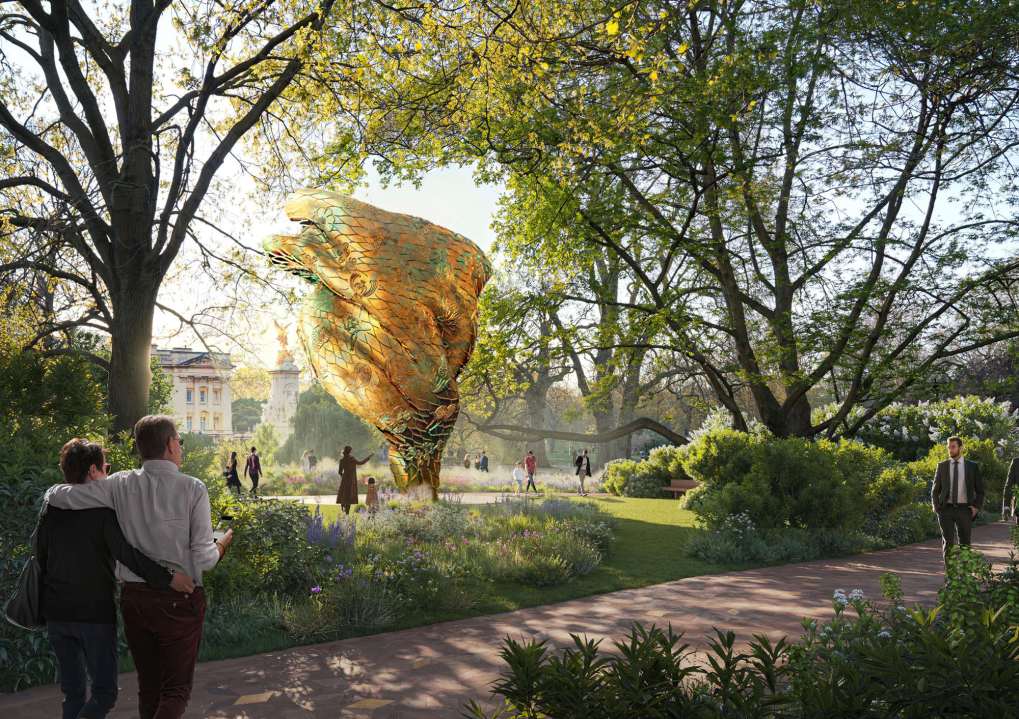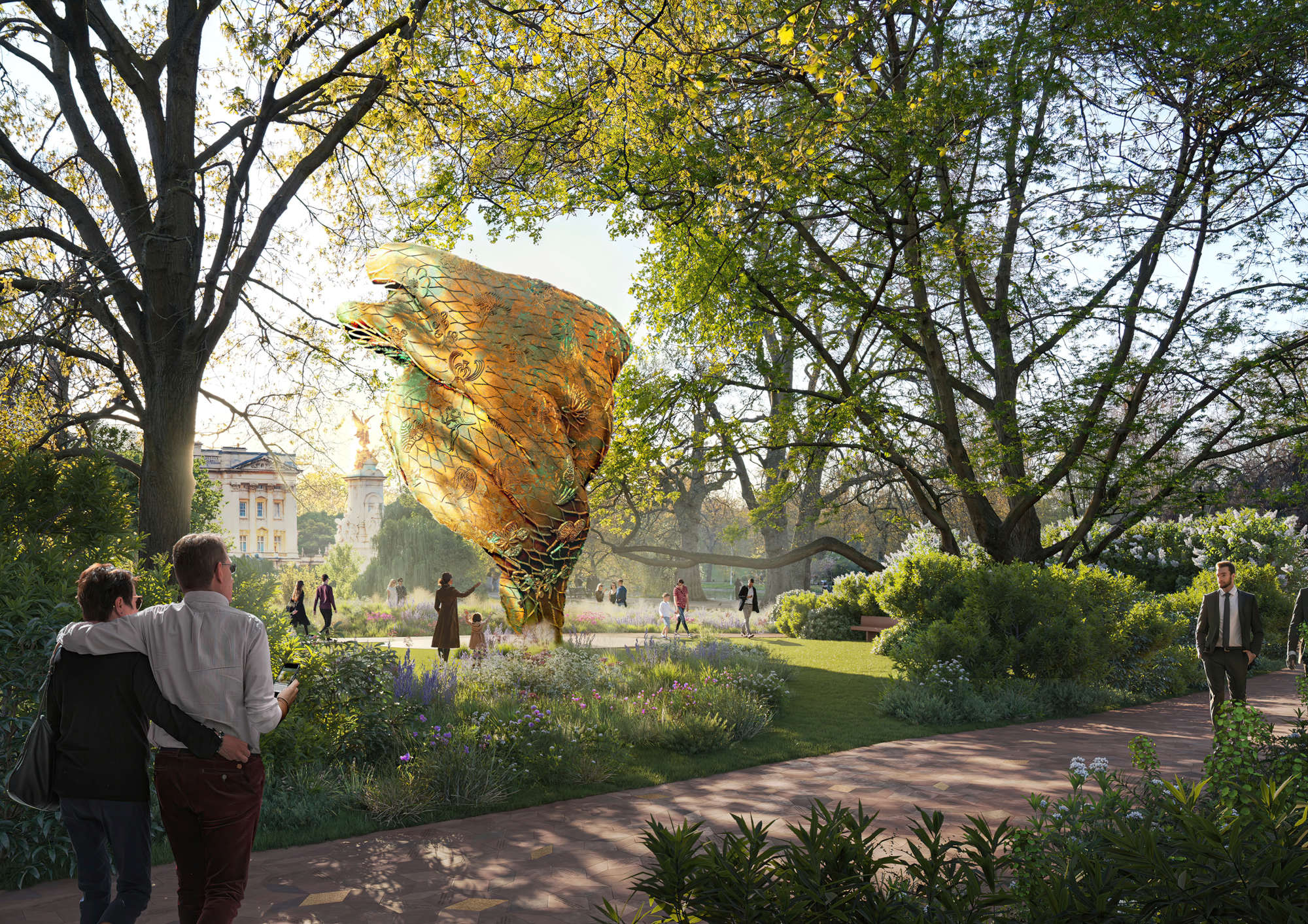The winner of the contest to design a memorial to the late Elizabeth II has been announced, and it’s not very good. When the shortlist of five designs was unveiled last month, the most striking feature of the various hopefuls was how little they had to say about the much-loved Queen, or the country she ruled over. Instead, they were empty displays of kitsch, with the only halfway palatable one being Tom Stuart-Smith’s design of an oak tree from Windsor Great Park. Had that been picked, I would have shrugged and sighed, but at least it was inoffensive enough.
The mocked-up images suggest there might be an enormous, horrible-looking gold monstrosity squatting outside Buckingham Palace
Unfortunately, the winner is Foster + Partners’ series of designs, which includes (checks notes) ‘a bridge with a new cut-glass balustrade inspired by the late Queen’s wedding tiara’ and the unlovely likes of ‘figurative sculptures and a new Prince Philip Gate’. Naturally, we are promised that ‘artistic installations will celebrate the nation’s diversity.’
There is a surprising vagueness to what, exactly, these ‘figurative sculptures’ and ‘artistic installations’ will be, giving the impression that Foster + Partners have been winging it. The mocked-up images suggest there might be an enormous, horrible-looking gold monstrosity squatting outside Buckingham Palace, which Norman Foster himself has had the gall to suggest ‘[reflects] the inspiration of the original design of St James’s Park by Sir John Nash.’
Foster was the best known of the architects bidding for the project, and as the holder of an Order of Merit, was privileged enough to meet the late sovereign on numerous occasions. It would be unfair to suggest that his appointment carries a hint of noblesse oblige, but when Foster states that ‘We have sought to reflect these qualities of the formal and informal in our design, with an appeal across a wide range of ages and interests’, it is hard not to feel that he is merely spouting buzzwords.
He may suggest that his design has ‘discreetly stretched the boundaries of art and technology with a deliberately gentle intervention’, but that just makes you want to shout: ‘Lord Foster, what does that actually mean?’
It’s enough to make you wish Foster and his team of collaborators were expelled from St James’s Park, even before the Prince Philip Gate becomes a reality. Granted, the news release about the project hedges its bets by saying, ‘this design concept will be subject to change as it undergoes refining’ and that ‘the final design will be formally announced in April 2026, alongside a legacy programme’, both of which imply that public reaction to the announcement might affect the choice of sculptor for the memorial. Should there be an outcry at this lacklustre, derivative and strangely shallow decision, then perhaps something more interesting may yet be salvaged from the wreckage, but I doubt it.
It is the inevitable nature of memorials that the dead have no say in the buildings and sculptures chosen to remember them. I suspect the late Queen would have wished for something solid, unpretentious and no-nonsense to commemorate her and her unparalleled legacy; a new public building, for instance, or some tasteful and unostentatious sculpture. This uninspired, unfocused mess isn’t it.
Her former private secretary Sir Robert Janvrin may say that ‘Foster + Partners’ ambitious and thoughtful masterplan will allow us and future generations to appreciate Queen Elizabeth’s life of service as she balanced continuity and change with strong values, common sense and optimism throughout her long reign’, but I suspect his former employer would look at this uninspiring tribute to mediocrity and wonder if she was regarded with indifference by her subjects. Ma’am, you weren’t. It is the memorial, and the ambitions of those who have created and commissioned it, that is small, not you.








Comments